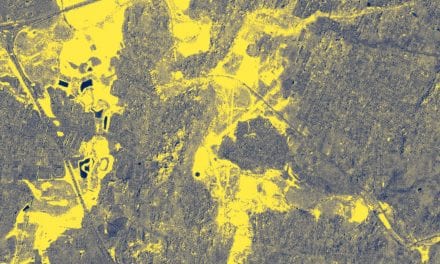How many Americans are living with paralysis in the United States? Using what may be the most recent data available, Healing Innovations, a Nashville-based robotic technology startup, cites information provided by the Christopher Reeve Foundation in 2013. Their company’s website states, “Nearly 1 in 50 people in the United States are living with paralysis — approximately 5.4 million people. In addition, approximately 1.1 million people a year in the United States alone experience an extreme neurological injury or diagnosis. This number will continue to increase due to the projected growth of the elderly population from 43.1 million to 83.7 million over the next several years.”
It was as a response to a situation suggested by this statement that caused the creation of Healing Innovations. Co-founder and CEO of Healing Innovations Luke Benda started his company after deciding to help a friend in 2010, who had suffered a spinal cord injury that left him partially paralyzed from the neck down.
“We saw firsthand the rehabilitation continuum and the experience that people go through after they’ve experienced neurological injury,” Luke tells Launch Engine. “Specifically, we saw the challenges that physical therapists and patients experience when facilitating locomotor therapy.”

According to the Mayo Clinic, “Locomotor training is an activity-based therapy to help improve and recover your walking movement through challenged practice and lower extremity weight bearing.” Luke explains that locomotor training is meant to spur “neuroplasticity,” which is defined by Britannica as the “capacity of neurons and neural networks in the brain to change their connections and behavior in response to new information, sensory stimulation, development, damage, or dysfunction.”
This form of therapy yields great improvement for patients who’ve experienced paralysis, which Luke says is “really exciting” with “almost miraculous outcomes” when one considers the situation. However, one drawback of this form of therapy is that it’s extremely difficult to facilitate. Luke explains that locomotor therapy requires a team of two to four clinicians dedicated to one patient for a physically rigorous process. It is easy to see how such therapy would be cost prohibitive.
Luke tells Launch Engine that many physical therapy locations just can’t offer that level of care. Prior to founding Healing Innovations, Luke helped launch three separate startups.
He knew what was needed to get a labor-intensive project off ground. Invested in his friend’s recovery, Luke talked to his father, an engineer specializing in ergonomics, who created the prototype.
“When we realized this problem, we saw that there was a way to help,” Luke says. He and his father built the prototype of the “Rise & Walk” gait training therapy machine as a weekend project. The end result? What was once an idea to help a friend and presented to the awe of clinicians has now become a business concept that sees Healing Innovations working with some of the top rehabilitation providers in the country.
Luke recalls, “Eventually, in 2018, that’s when we realized, ‘Wait a second, this is something that we could use to try to help more people.” It was that year that Healing Innovations became a bona fide company. In forming Healing Innovations as a business, Luke was able to grow the team to four, with three contracted employees and an advisory board of seven. This includes an engineering team that he considers “world-class” to help further improve on the Rise & Walk’s design.

The website for Healing Innovations features videos of others using the machine for their own gait training, discussing how the Rise & Walk could bolster their rehabilitation as well.
The Rise & Walk works via a harness that suspends a patient in the air, just enough to get each foot into the machine’s footplates. Each arm is given a handle, and the person’s arms and legs are moved via the machine, simulating the arm-swinging and leg motion of walking. The device collects the analytics of the gait training session, thus allowing clinicians to observe how the patient’s mobility is improving. A monitor attached to the device lets clinicians and users interface with the machine to show patient progress for the session.
“We’re really the first technology that has upper and lower extremity gait synchronization,” Luke says. “And the reason we have that is there’s actually a couple of new, really exciting studies that show combining the upper and lower extremities into a rehabilitation session has an incredibly powerful benefit beyond just normally focusing on lower extremities.” Luke adds that not only could this help patients recover faster, it could make for ideal rehabilitation for those suffering from strokes or Parkinson’s disease.
Healing Innovations brought the Rise & Walk to the world through partnerships with various organizations. The Shepherd Center—whose website says “is ranked by U.S. News & World Report as one of the top 10 best rehabilitation hospitals in the nation”—is using the Rise & Walk machine with some of its patients. At the time of writing, the information on the exact number of patients being helped by the device is confidentially protected under HIPAA. Launch Tennessee was both an early-stage investor (through its venture capital arm) as well as a connector to different business mentors for Healing Innovations. Entities like Chicago’s Matter or Chattanooga’s The Company Lab (CO.LAB) pushed Healing Innovations to fine-tune its business model so that it could be scalable. The National Science Foundation (NSF) awarded Healing Innovations a Phase I grant to develop a separate, and compatible, technology for the Rise & Walk. The Dartmouth Institute for Health Policy & Clinical Practice’s Center for Translation of Rehabilitation Engineering Advances and Technology (TREAT) aided in the renderings of the Rise & Walk.

Readers should know that prior to the Rise & Walk machine, Luke says that robotic systems for gait training were available to the public at the cost of $300K-400K. There was also the option of hiring a team of up to four physical therapists. Based on the work required, he considers neither option economical to the consumer.
Addressing the barriers many patients and physical therapists would face, Luke states, “When you have those two options, the vast majority… just can’t offer it. And so, we provide a solution that’s packaged in a way where it doesn’t require four clinicians. It also can provide a positive business model for a lot of these facilities. And then, because of that, we’re going to be able to increase access to this care, especially facilities that previously they would have never dreamed of having this type of therapy because they didn’t have viable patient volumes. So we can really go after some smaller clinics, remote clinics, and just increase access to this care. That’s our first step. And eventually, we have ambitions of other technologies as well. But that’s kind of our first step toward trying to help people.”
Looking to 2021, Luke tells Launch Engine that Healing Innovations has a few projects in the works. The company is now working alongside the NSF to develop another version of its technology.
For further information about Healing Innovations, be sure to visit its website and social media.








